Transmissions & Oversized Tires
How Changing Gear Ratios Helps Prevent Drivetrain Damage
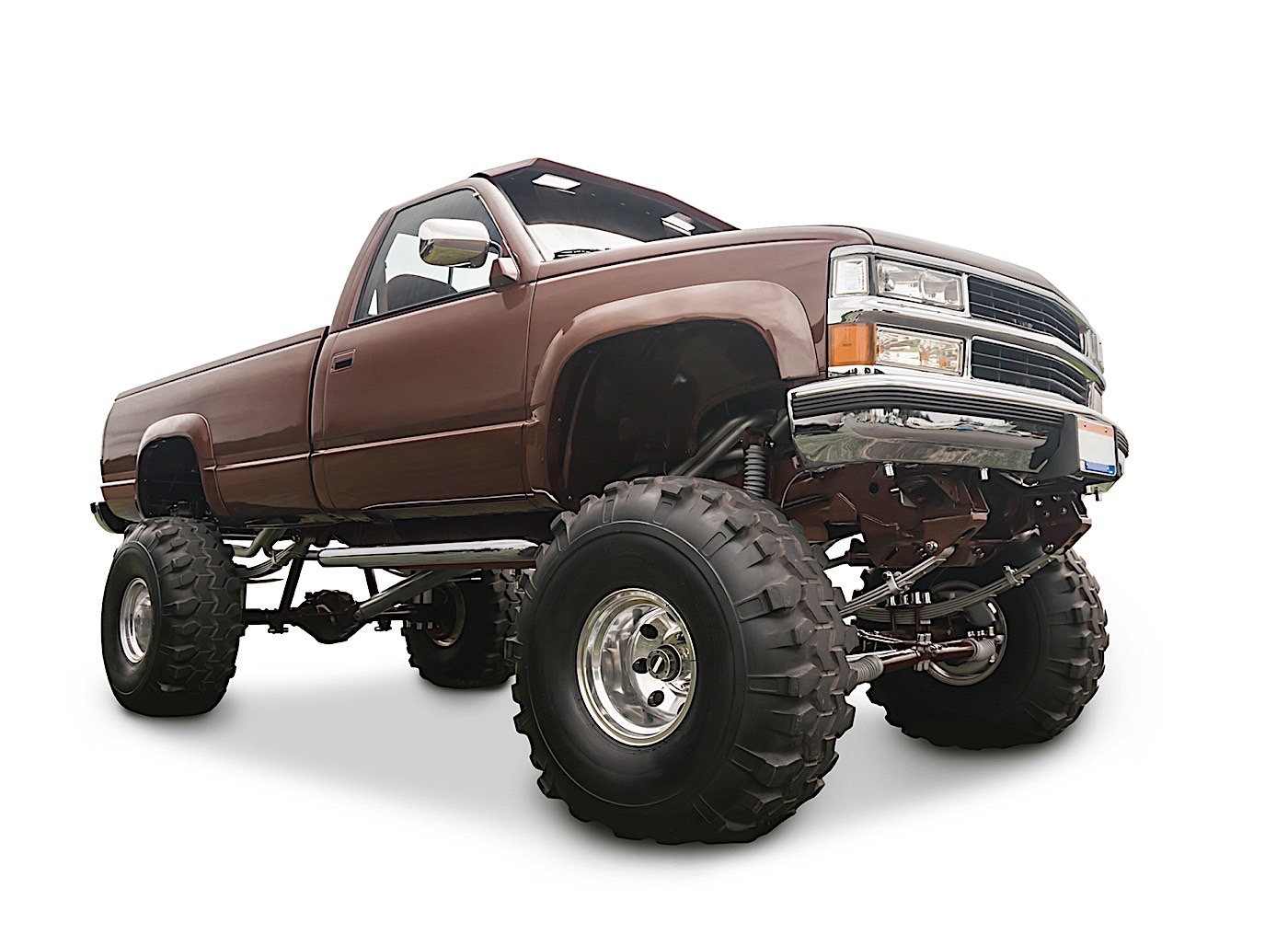
Programming Not Included
A customer recently brought his 2011 Ford F-150 into our facility after a general-repair shop (not a specialized transmission shop) had just installed a used transmission. His truck was a 4WD vehicle equipped with a 5.0L engine and 6R80 transmission. When the customer picked up the truck from the previous shop he was told that the transmission was installed and everything was fine, but it still needed to be programmed (the shop didn’t have the equipment to perform this important step).

Accelerating in 4X4 Comes with a Bang
A while back I had a truck that came into our shop for a noise concern. The customer stated that he heard a loud clunk or repeated popping noise when he would accelerate with the truck in automatic 4×4 mode, as well as in 4×4 high and 4×4 low. He also stated that he didn’t notice the noise under light acceleration in these modes, and that the noise was not present when he was in 2WD under any type of acceleration. The truck was a 2009 K1500 Silverado with a little over 83,000 miles on it. Upon reading the description, it sure seemed like I had a transfer case problem to look into.
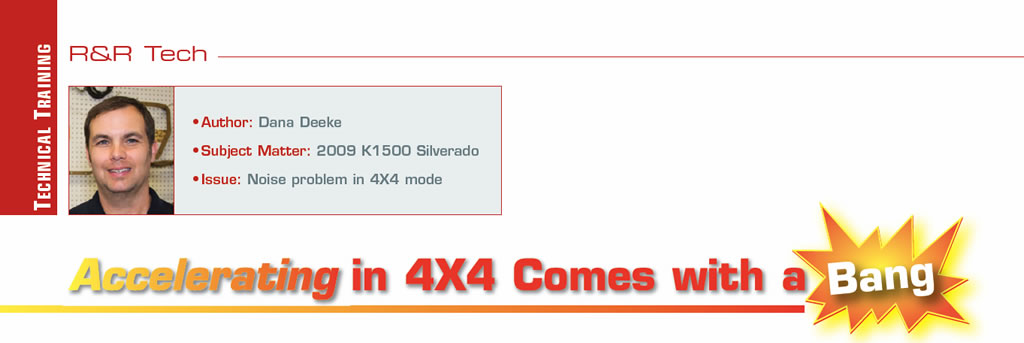
Tag, You’re It!
This story is about the grown-up “shop” version of the game. The vehicle in question is a 2005 Ford F-150 4WD with only 49,568 miles. It all started like so many others: It came in with erratic shifts, abnormal noise and metal in the pan. The vehicle also had two transmission codes: P0712 and P0713. Initial diagnosis determined that the unit had internal hard-part damage. A remanufactured replacement transmission was in order.
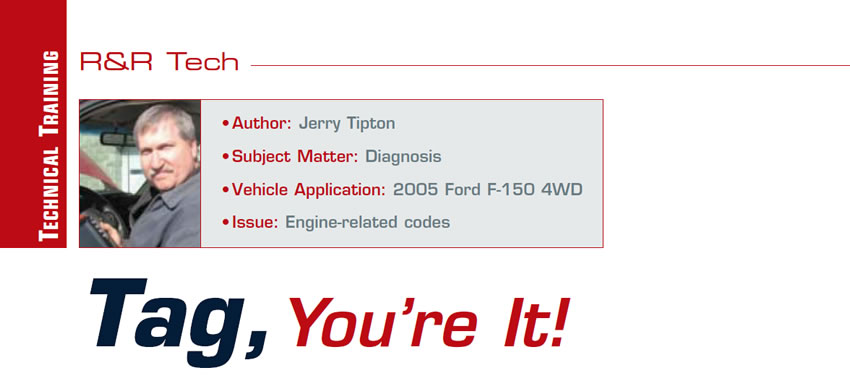
Diagnosing Explorer’s Shift Complaint not an Easy Task
A 2002 Ford Explorer came into our shop recently with a shifting complaint. The customer said it slipped or felt bumpy under fairly hard acceleration.
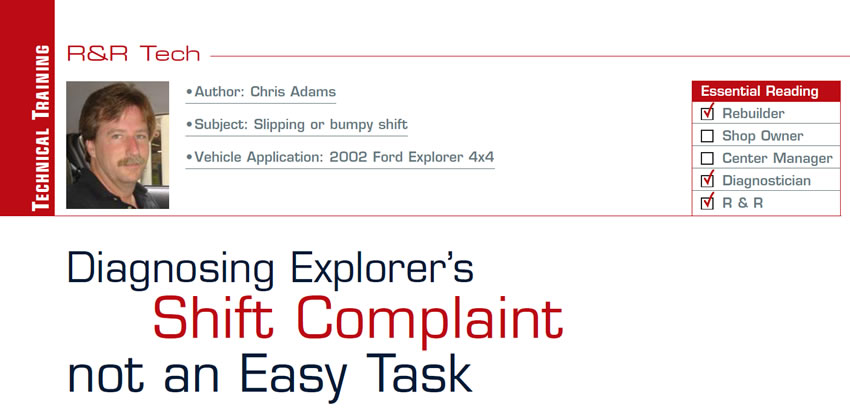
Bitter Cold: Sometimes It’s the Root Cause, Sometimes It’s Not
Here in Denver, when the snow flies and the mercury plummets, we all like to press “4WD” on our dashboards and blast out into the blizzard. When our rigs stay in “2WD” and slide into the gutter – that’s when I get the phone calls. The following two customers called me the same morning recently, and we came to two very different conclusions after diagnosing their inoperative four-wheel-drive (4WD) systems.
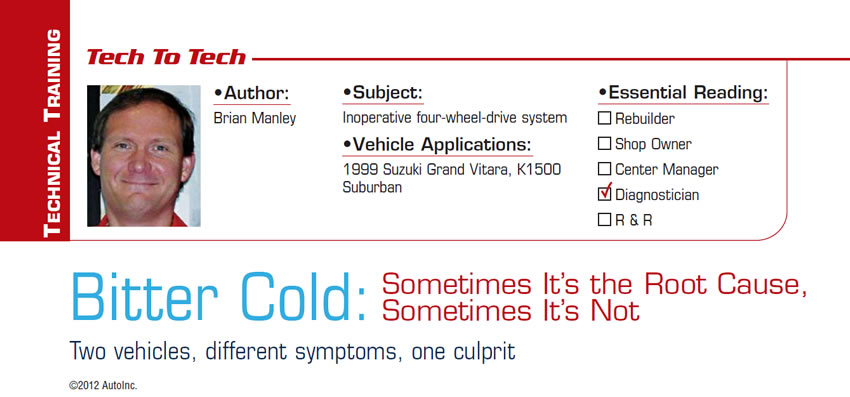
Don’t Get Shook Up
Here is a trouble vehicle – a 1999 Chevrolet 4WD Silverado extended-cab pickup – suffering from a problem whose unique cause was difficult for us to find. The customer’s complaint was that the transmission-to-transfer-case adapter had cracked repeatedly. I don’t know the exact count, but by the time we were blessed with this job I think the count was three broken adapters. Figure 1 is an example of one of the broken adapters that was cracked near the transfer-case mounting bolts.
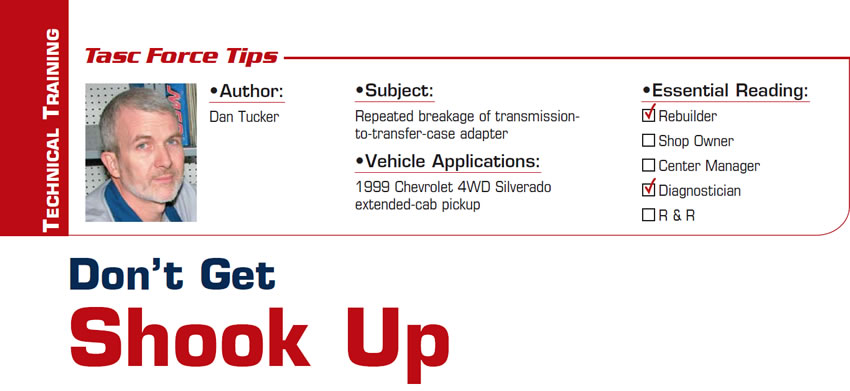
Don’t Forget the Basics
Instead of choosing just one success story that applies to one vehicle, how about writing something that applies to all vehicles? The thought that I want to convey is to pay attention to the simple things and small details alike, both when diagnosing a problem and when removing and reinstalling a transmission.
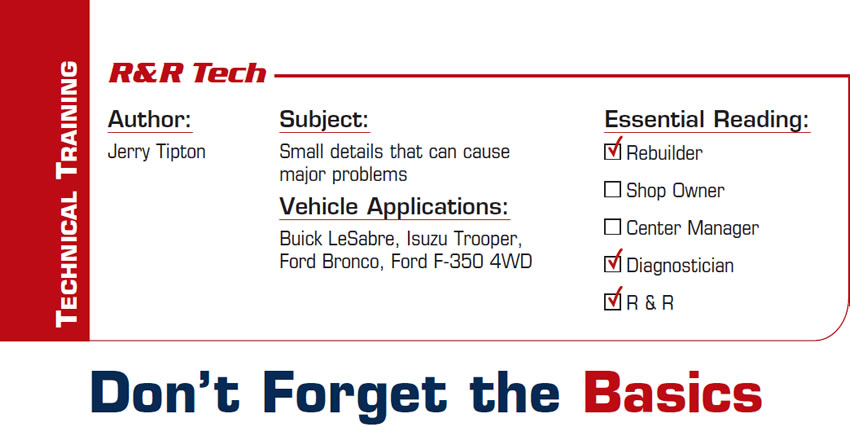
Is Your 4WD Explorer Neutralizing?
But inside the transfer case closest to the transmission is the transfer direct-clutch drum that the sealing rings just love to dig into. The severity of the wear determines the degree of the complaint; i.e., delayed engagements, slipping or no movement. Technicians often misdiagnose this problem by blaming the transmission for the problem when all along it has been in the transfer case.

Replaced the What?
Sometimes a problem with a vehicle requires quite a bit of diagnostic head scratching, at the end of which you finally find what is causing the problem.

